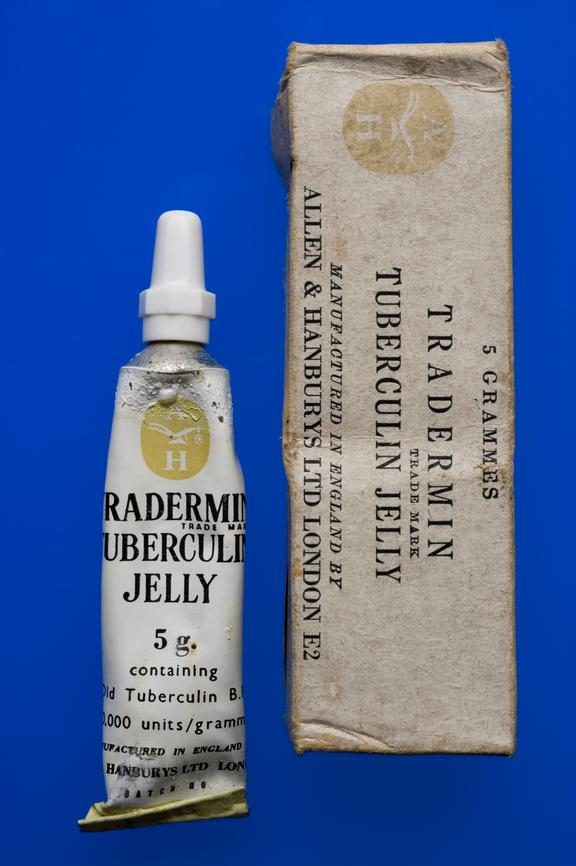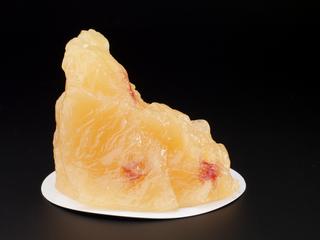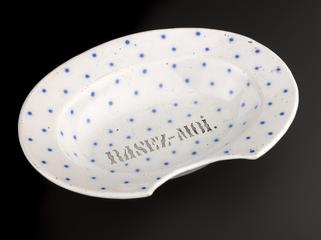
Tube of tuberculin jelly, London, England, 1955
- maker:
- Allen & Hanburys Limited

1 tube Tuberculin Jelly 5gr, made by Allen & Hanburys Ltd, London E2, 15 Feb.1955
This jelly may have been used to conduct a test to see whether a person has been exposed to bacteria-causing tuberculosis. This test, called the ‘Fluorpa-per test’, was introduced in 1936.
A 20 mm high “V” was applied in jelly on the left hand side of the spine. Once the skin was sanded with a very fine sand paper, the jelly was applied in the same way to the right side. Zinc oxide was placed over the jelly and removed after three days. The skin was then examined. If the person had been exposed, there would be a slight red mark. However, the results of the test were hard to interpret and even experts disagreed on diagnoses.
Details
- Category:
- Public Health & Hygiene
- Object Number:
- 1994-1074
- Measurements:
-
overall: 19 mm x 80 mm x 25 mm, .005kg
overall tube: 16 mm x 72 mm
- type:
- tube (container) and tuberculin




